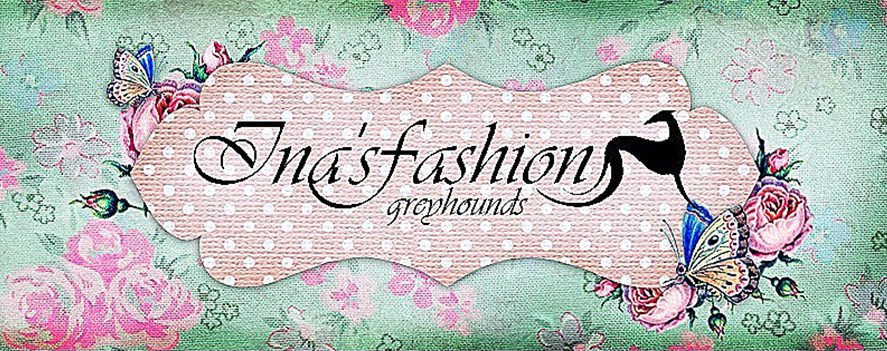The Greyhound
Tall and lean, the Greyhound is the fastest breed of dog and the 2nd fastest animal on the planet. As a sight hound, the breed pursues game using its vision and speed. Today, however, the Greyhound primarily serves as a sweet and personable companion.The Greyhound has been owned by many prominent figures in history.
One of the most ancient breeds known to man, evidence of the Greyhound was first discovered in tomb carvings in Egypt dating back to 2900 B.C. Aristocracy and culture has always surrounded the Greyhound, and in early times, only royalty bred them. As hunters in England, they were used on practically all kinds of game from deer, stags and foxes, but the hare is the Greyhound’s natural quarry.
Right Breed for You?
Although a loving companion, the Greyhound possesses the typical independent spirit of the hound, so patient training is necessary. They enjoy the company of their families as well as other dogs. The breed’s short, smooth coat is easy to maintain. Due to the Greyhound’s athleticism, they need daily exercise, but should be kept on leash or in a fenced area due to their tendency to run.
FCI-Standard N° 158
ORIGIN : Great Britain.
DATE OF PUBLICATION OF THE ORIGINAL VALID STANDARD : 24.06.1987.
DATE OF PUBLICATION OF THE OFFICIAL VALID STANDARD : 13.10.2010
UTILIZATION : Sighthound.
CLASSIFICATION F.C.I. : Group 10 Sighthounds.
Section 3 Short-haired Sighthounds.
Without working trial.
BRIEF HISTORICAL SUMMARY: The experts, although not unanimous, consider that the Greyhound could have had its origins in the Middle East. Drawings of Greyhound-type dogs have been found on walls in Ancient Egyptian tombs, dating as far back as 4000 BC. Though dogs of the type spread through Europe over the years, it was in Britain that they were developed to a standard. The prototype of the so-called sighthounds, or gazehounds, the Greyhound is well known to many people. The coursing hound, which hunts the live hare, is what the racing Greyhound were developed from, only the cheetah tops the Greyhound for speed. One racing Greyhound was clocked at over 45 mph.
GENERAL APPEARANCE: Strongly built, upstanding, of generous proportions, muscular power and symmetrical formation, with long head and neck, clean well laid shoulders, deep chest, capacious body, slightly arched loin, powerful quarters, sound legs and feet, and a suppleness of limb, which emphasise in a marked degree its distinctive type and quality.
BEHAVIOUR / TEMPERAMENT : Possessing remarkable stamina and endurance. Intelligent, gentle, affectionate and even tempered.
HEAD : Long, moderate width.
CRANIAL REGION :
Skull : Flat.
Stop : Slight.
FACIAL REGION:
Muzzle: Jaws powerful and well chiselled.
Jaws / Teeth: Jaws strong, with a perfect, regular and complete scissor bite, i.e. the upper teeth closely overlapping the lower teeth and set square to the jaws.
Eyes: Bright, intelligent, oval and obliquely set. Preferably dark. Ears: Small, rose-shape, of fine texture.
NECK : Long and muscular, elegantly arched, well let into shoulders.
BODY :
Back : Rather long, broad and square.
Loins : Powerful, slightly arched.
Chest : Deep and capacious, providing adequate heart room. Ribs deep, well sprung and carried well back.
Underline and belly: Flanks well cut up.
TAIL :Long, set on rather low, strong at root, tapering to point, carried low, slightly curved.
LIMBS :
FOREQUARTERS : Forelegs long and straight, bone of good substance and quality. Elbows, pasterns and toes inclining neither in nor out.
Shoulders : Oblique, well set back, muscular without being loaded, narrow and cleanly defined at top.
Elbows : Free and well set under shoulders.
Forearm: Forelegs long and straight, bone of good substance and quality.
Metacarpus (Pastern): Moderate length, slightly sprung.
Forefeet: Moderate length, with compact, well knuckled toes and strong pads.
HINDQUARTERS : Body and hindquarters, features of ample proportions and well coupled, enabling adequate ground to be covered when standing.
Thighs and second thighs : Wide and muscular, showing great propelling power.
Stifle/knee : Well bent.
Hocks : Well let down, inclining neither in nor out.
Hind feet: Moderate length, with compact, well knuckled toes and strong pads.
GAIT / MOVEMENT : Straight, low reaching, free stride enabling the ground to be covered at great speed. Hindlegs coming well under body giving great propulsion.
COAT
HAIR : Fine and close.
COLOUR : Black, white, red, blue, fawn, fallow, brindle or any of these colours broken with white.
SIZE : Ideal height : dogs 71-76 cm (28-30 ins); bitches 68-71 cm (27-28 ins).
FAULTS:
Any departure from the foregoing points should be considered a fault and the seriousness with which the fault should be regarded should be in exact proportion to its degree and its effect upon the health and welfare of the dog and on its ability to perform its traditional work.
DISQUALIFYING FAULTS:
• Aggressive or overly shy dogs.
• Any dog clearly showing physical or behavioural abnormalities shall be disqualified.
N.B.:
• Male animals should have two apparently normal testicles fully descended into the scrotum.
• Only functionally and clinically healthy dogs, with breed typical conformation should be used for breeding.
